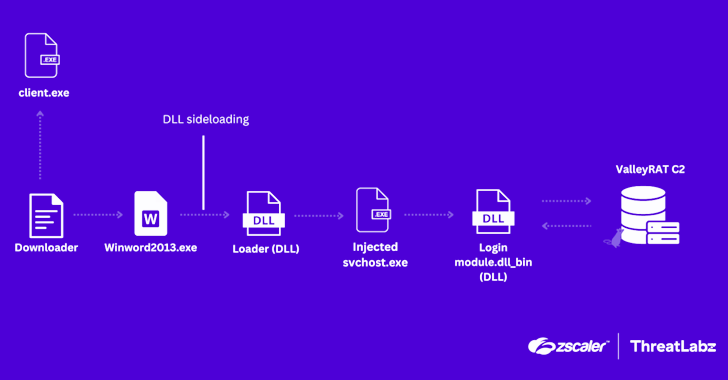Essential Cybersecurity Upgrades for 2024

Network security is vital for safeguarding computer networks from unauthorized access and malicious attacks in our increasingly digital world. This guide explores essential strategies like endpoint security, information security, cloud security, IoT security, mobile security, and identity & access management (IAM). Cybersecurity can easily protect individuals and organizations and their sensitive data, maintain privacy and ensure the smooth operation of digital systems. Understanding these key components empowers us to navigate the complex cybersecurity landscape confidently and resiliently.
As threats to our digital world keep growing, it’s more important than ever for people to learn cybersecurity skills. A cyber security certification course helps individuals understand and tackle potential risks, keeping their personal and professional digital information safe. With cyber threats spreading across areas like finance, healthcare, and government, mastering cybersecurity basics is crucial for staying ahead of dangers and keeping digital spaces secure.

What is cybersecurity?
Cybersecurity is a vital shield, guarding networks and devices against external threats. Businesses rely on cybersecurity experts to fortify their defenses, preserve the confidentiality of sensitive data, ensure the integrity of information, and maintain uninterrupted access to systems and services.
At the heart of cybersecurity lie confidentiality, integrity, and availability principles, collectively known as the CIA triad. Confidentiality ensures that only authorized parties can access data, integrity guarantees the accuracy and trustworthiness of information, and availability ensures that systems remain accessible when needed.
Authentication mechanisms form a cornerstone of cybersecurity, verifying the identity of users attempting to access accounts or systems. A username identifies the account, while a password is the key to validating the user’s identity, safeguarding against unauthorized access.
Best widely accepted domains within the cybersecurity community
- Security & Risk Management: Focuses on managing security risks effectively.
- Asset Security: Protects valuable assets within an organization’s infrastructure.
- Security Engineering: Involves designing and building secure systems and networks.
- Communications & Network Security: Ensures secure transmission of data across networks.
- Identity & Access Management: Manages user identities and controls access to resources.
- Security Assessment & Testing: Evaluates security measures through assessments and testing.
- Security Operations: Involves monitoring, detecting, and responding to security incidents.
- Software Development Security: Incorporates security principles into software development processes.
Some of the Best Cybersecurity Upgrades of 2024
AI-Driven Threat Detection
Navigating the ever-changing realm of cybersecurity in 2024 demands staying ahead of emerging threats. This year has seen remarkable advancements aimed at bolstering our defenses and minimizing risks. From harnessing artificial intelligence for instant threat detection to embracing quantum-safe cryptography for future-proofing, organizations are adopting diverse upgrades to enhance security.
Zero Trust Architecture (ZTA) shifts trust paradigms while Extended Detection and Response (XDR) streamlines threat management. Immutable security infrastructure, behavioral biometrics, and Secure Access Service Edge (SASE) further bolster resilience. Continuous security testing and privacy-preserving technologies take a proactive stance on safeguarding data and privacy.
In this overview, we explore some of the top cybersecurity upgrades of 2024, highlighting their importance and impact on digital defense strategies and machine learning algorithms that can easily detect and respond to cyber threats. These tools generate data accuracy from a vast information pool to detect anomalies and patterns indicative of potential security breaches.
Zero Trust Architecture (ZTA) shifts away from the traditional perimeter-based security model, adopting a “never trust, always verify” approach. An authenticated and authorized user profile reduces the attack surface regardless of their location within the network.
Quantum-safe cryptography organizations are adopting quantum-safe cryptographic algorithms with the looming threat of quantum computers breaking existing encryption methods.
These algorithms resist attacks from and protect sensitive data.
Extended Detection and Response (XDR) effortlessly integrates multiple security products into a unified platform, enhancing visibility and coordinating threat detection and response.
It consolidates data from various sources, such as endpoints, networks, and cloud services, streamlining security operations.
Immutable Security Infrastructure prevents unauthorized changes or modifications to critical systems and configurations. Organizations can minimize the risk of configuration drift and unauthorized access by implementing immutable infrastructure.
Behavioral Biometrics assess innovative patterns, such as typing dynamics and mouse movements, to identify and authenticate user behavior.
This adds a layer of security beyond traditional authentication methods like passwords or biometrics.
Secure Access Service Edge (SASE)
SASE converges networking and security functions into cloud-based resources, providing secure access to applications and data from anywhere. It combines features like SD-WAN, CASB, and FWaaS to deliver comprehensive security and networking capabilities as a service.
Continuous Security Testing involves assessing systems and applications to identify vulnerabilities and weaknesses. Automation tools are leveraged to conduct frequent tests without disrupting normal operations, ensuring proactive security posture maintenance.
Privacy-preserving technologies, such as differential privacy and homomorphic encryption, facilitate data analysis while protecting sensitive information.
These techniques allow organizations to derive insights from data without compromising individual privacy rights. These upgrades reflect the evolving landscape of cybersecurity in 2024, emphasizing proactive measures to mitigate emerging threats and safeguard digital assets.
Seven layers of cyber security
In our digital-centric world, cyber security is our invisible shield against many online threats. Each layer is a stronghold against digital vulnerabilities, providing distinct protection methods to safeguard your valuable online domains.
- The human layer, considered the most susceptible, concentrates on people within an organization. It involves adopting practices and rules to prevent employees, contractors, and users from succumbing to security risks like phishing due to human error or unawareness. Measures at this layer include security training, strict password policies, and multi-factor authentication, enabling users to recognize and handle security threats effectively.
- The perimeter security layer acts as the protective walls of a fortress for your network. It regulates incoming and outgoing network traffic according to established security policies. This layer utilizes firewalls, intrusion detection systems (IDS), intrusion prevention systems (IPS), and VPNs to create a barrier between your secure internal network and external networks like the Internet. For instance, a firewall filters incoming traffic based on security policies, allowing or blocking packets to prevent unauthorized access to network resources.
- The network layer plays a fantastic dynamic role in managing and safeguarding communication among applications and devices on your network. It employs diverse security measures to prevent attackers from intercepting or altering information transmitted over the network. Security measures include using protocols like HTTPS, implementing network segmentation to segregate sensitive areas from less critical ones, and deploying anti-malware and antivirus software to monitor network traffic and detect malicious activities and unauthorized access.
This layer is essential in cybersecurity as it is the communication bridge connecting various network components. It is highly significant due to the constant flow of information it handles, making it an attractive target for cyber adversaries seeking to intercept, manipulate, or disrupt data transfer. Organizations ensure the integrity, availability, and confidentiality of transmitted information by securing the network layer with encryption, robust protocols, and sound network architectures. This protects against unauthorized access and potential cyber threats and maintains secure and uninterrupted organizational operations.
- The application security layer is dedicated to ensuring the safety of software and devices from potential threats. It focuses on the importance of secure coding practices, as cyber threats can exploit application vulnerabilities. Examples of security measures at this layer include conducting regular security scans and tests to detect and address vulnerabilities. Employing application security solutions like Web Application Firewalls (WAFs) helps protect against threats such as SQL injection and Cross-Site Scripting (XSS). This layer is crucial for maintaining the integrity and security of applications, as it addresses vulnerabilities that cyber attackers could otherwise exploit.
- The endpoint security layer protects devices that connect to the network, such as computers, smartphones, and tablets. Securing these endpoints is critical as they serve as entry points to the network. For instance, endpoint security measures include using antivirus programs and endpoint detection and response (EDR) solutions to monitor and block malicious device activities. This ensures that the threat does not spread throughout the network if a device is compromised. Endpoint security is uniquely responsible for safeguarding against cyber threats by providing targeted protection for vulnerable devices.
- The data security layer is specifically designed to safeguard the data stored within the network, focusing on preserving its confidentiality, integrity, and availability. Encryption is a crucial data security measure, converting sensitive information into a coded format to prevent unauthorized access. Additionally, implementing backup solutions and establishing strong access controls are essential to protect data from loss, exposure, and unauthorized access. Also, it protects sensitive information, enhancing the network’s overall security posture. The data security layer plays a critical role in maintaining the security and integrity of valuable data assets, shielding them from potential threats and ensuring their availability when needed.
- The mission-critical assets layer protects vital assets crucial for an organization’s operations. This includes proprietary software, sensitive customer data, and essential hardware. Protection strategies include deploying layered defenses such as firewalls, threat detection and prevention systems, and strong access controls. For example, regularly updating and patching critical applications helps address vulnerabilities, reducing the risk of exploitation and ensuring uninterrupted functionality of essential assets. This layer maintains the security and continuity of critical business operations and assets.
Conclusion
In our dynamic digital realm, cybersecurity is paramount for safeguarding against evolving threats. The “5C” model—Change, Continuity, Cost, Compliance, and Coverage—provides a structured approach to bolster defenses and navigate this complex landscape effectively. By embracing these pillars, organizations ensure adaptability, seamless protection, optimized resource allocation, regulatory adherence, and comprehensive security coverage.
Yet, in this ever-expanding domain, the significance of cybersecurity education cannot be overstated. Enrolling in a cyber security certification course empowers individuals with the much-needed insights to combat emerging threats, safeguard critical assets, and bolster the resilience of digital environments. As technology advances, investing in cybersecurity education becomes imperative and strategic for securing our digital future and staying ahead in the constantly evolving cybersecurity landscape.



